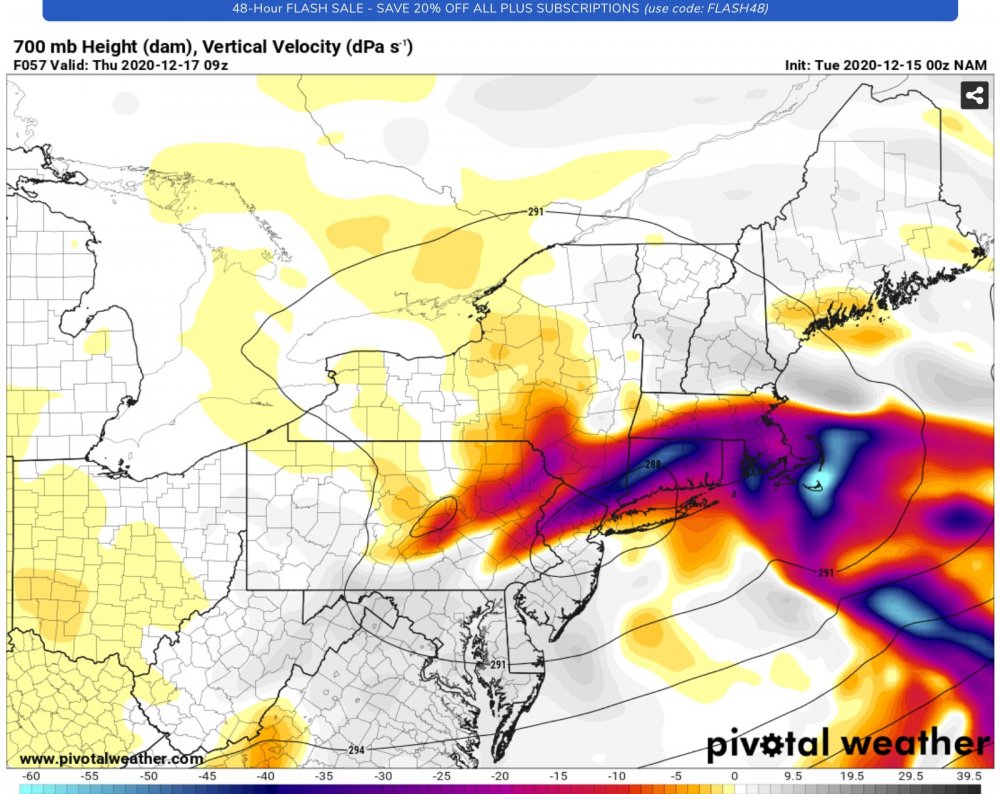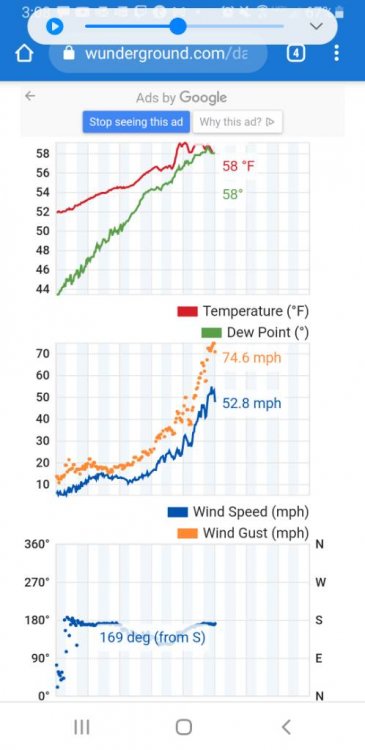
drstuess
-
Posts
167 -
Joined
-
Last visited
Content Type
Profiles
Blogs
Forums
American Weather
Media Demo
Store
Gallery
Posts posted by drstuess
-
-
2-3 (eyeballed) of fluff in Narragansett, RI. Coming down nice and dead clam out.

Sent from my SM-G960U using Tapatalk-
 1
1
-
-
Snow plastering everything, decent number of small and medium trees down in the neighborhood
Sent from my SM-G960U using Tapatalk -
Pretty quickly (10 mins) went from nothing to snowing pretty good in Southern RI. If it keeps this up, seems like we should do well enough
Sent from my SM-G960U using Tapatalk
-
I know there was a partial burial of some folks yesterday who had no gear, training, etc, but I haven't seen any news elsewhere of a slide/death today. That would be tragic, especially if it was a rescuer...
Sent from my SM-G960U using Tapatalk -
Wind was much less than the last one in S. RI. Some light roaring, but all my wreaths are still on the windows.
Sent from my SM-G960U using Tapatalk -
Thats a nice wave maker. Nice xmas south swell. Beauty of skiing and surfing, make lemonade out of grinches.This is nuts. Let’s watch this all shunt each run here on in
Sent from my SM-G960U using Tapatalk
-
Drought in the summer, rain in the winter. Might as well jump in the bay now. Lock in the weenie shrinking...
Sent from my SM-G960U using Tapatalk-
 1
1
-
 1
1
-
-
Congrats picnic tables...
Sent from my SM-G960U using Tapatalk -
-
Block buoy up to 22ft. Should be some good swells tomorrow.
Sent from my SM-G960U using Tapatalk-
 1
1
-
-
Power out in Jamestown
Sent from my SM-G960U using Tapatalk-
 1
1
-
-
-
I will give a shameless plug of my friends local surf forecasting app. Ww3 data, gfs wind, local cams, and very good spectral analysis from the local buoys. RI specific, but worth checking out: called "HopeWaves" .Ruggles will be big . Surf was 30-40% more focused in that deeper water spot w Paulette as opposed to first beach . Second beach was mostly blocked as it has poor SE exposure .Some faces were a solid 12 feet.
Is Teddy’s wind field of 34 knot winds similar size on east side as Paulette
currently i see forecasts of 6 feet @17 seconds from 148-150 degrees Late Sunday / Monday in RI

Sent from my SM-G960U using Tapatalk
-
 1
1
-
-
Paging McGulps!What a sick angle Teddy is taking from yesterday to Sunday for a monster SE swell . Ruggles- Newport looks like a lock for 12-15 foot faces
Sent from my SM-G960U using Tapatalk
-
Our town was on a full outside watering ban for most of the summer. Not supposed to water garden or anything. Many did not adhere to it, but the town threatened to cut off service to offenders.Yeah that’s why I laugh as well... what’s the true impact? Suburban lawns went brown?
I still laugh at a Ginxy comment from a while back saying something along the lines of “Have you ever heard of an invention called a hose?”
I haven’t heard one person mention the drought anywhere outside this forum. My parents in Woodstock had a fine garden...said the lawn was hurting but shocker, they watered the garden and got a lot of produce during one of the most severe droughts ever in NCT.
Sent from my SM-G960U using Tapatalk
-
Friends house in Charlestown, RI just took a big gust. Brought a big pine into his deck.
Edit: N grid also showing our neighborhood without power. Thankfully we do have lower though.




Sent from my SM-G960U using Tapatalk
-
 1
1
-
 3
3
-
-
Yeah, I saw this pic from down the road in Green hill.Yikes best bud Little Joe's wife was in her car when a branch fell in his driveway. Just about totalled the car, no injuries. Big tree damage in Ashaway RI
Sent from my SM-G960U using Tapatalk
-
I heard the beavertail lighthouse lost a section of roof...
Sent from my SM-G960U using Tapatalk -
10+ big trees down in my 5 mile commute. Lots of wind and little power on south shore RI.

Sent from my SM-G960U using Tapatalk-
 1
1
-
-
Power out in Narragansett RI and Charlestown. Super windy down here.
Sent from my SM-G960U using Tapatalk -
1. ( to the post you are relying to) Energy losses at transmission voltages are not a huge driver for decentralization. The largest benefits are usually sub station upgrade deferrals and other capex/ demand (kW) driven reasonsIt's a nice idea, but I can't help but wonder what the energy cost is of mining, refining, packaging, shipping, installing and disposing of a gigantic battery. How much solar would you need to be reap to offset both your personal usage and all the fossil fuels spent to produce and dispose of it? I don't know the answer, but I suspect the payback period would be substantial.2. The full life emmisions impacts of solar, wind, BESS are substantially lower than fossil fuel plants... . For example, solar is around 40 g/kWh( ~4x worse than wind but small scale wind has crap capacity factors so not applicable for a homeowner) over the life of a system and batteries are probably 100,000 g/kwh capacity. If you have a 10 kWh battery and use it every day for 10 years, that's around another 25 g/kWh.
Thia puts you around 65 total g/kWh which compares favorably to ~400 for nat gas and ~ 800 plus for coal. These are pretty conservative estimates, but does compare favorably to the grid in most places (maybe not wind rich places).
There are some concerns like cobalt mining practices for lithium ion batteries, however those are already being designed around...
Sent from my SM-G960U using Tapatalk
-
 1
1
-
-
Just slant sticked my way to 2.5 inches of cake batter in the front yard in Narragansett. Long way to go to reel in the 10-18 forecasted.
Sent from my SM-G930V using Tapatalk -
Disappointingly only 2 inches or so in the backyard here in Narragansett. Wind is whipping though and raining down ice chunks from the trees.
Sent from my SM-G930V using Tapatalk



March 2021 Weather Discussion
in New England
Posted
Sounded like a freightliner just came through, shook the house and trashcans all knocked over. Impressively abrupt here. Weather station has only been up since xmas, but just hit its max gust of 32. Nothing crazy but decent considering it is pretty sheltered from the north by the house and reads low as a result.
Sent from my SM-G960U using Tapatalk